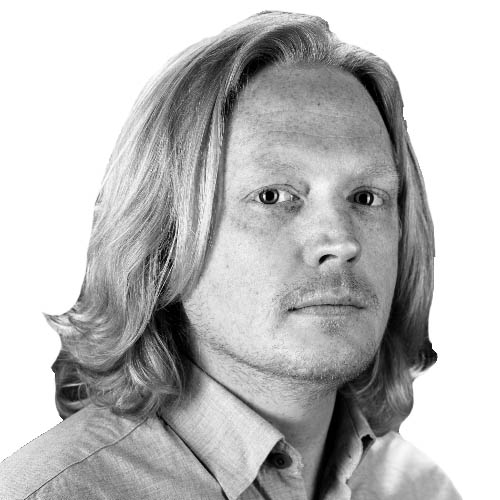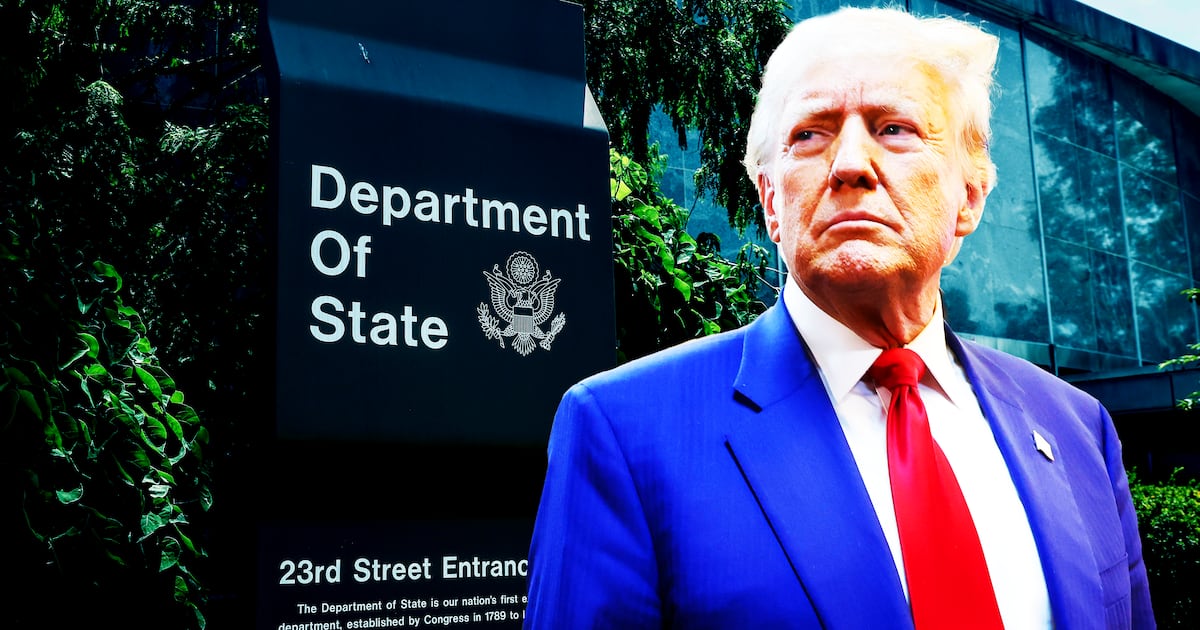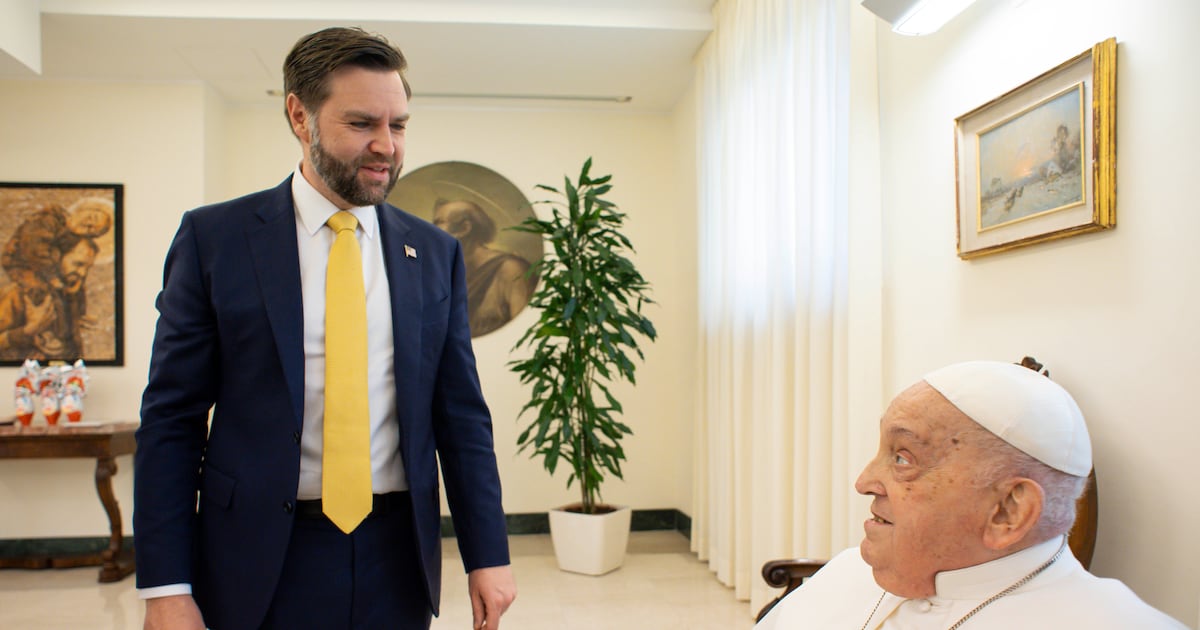Communist agitators stirring up a civil rights protest sounds like a bad ‘60s flashback, but that’s just what happened last week in Ferguson, Missouri.
The Revolution Club of Chicago took to the streets Monday, busy “working with people.” After darkness fell and while the crowd of protesters grew larger and more boisterous, Carl Dix walked along West Florissant Avenue with Joey Johnson and Lou Downey, members of the Chicago club. It was clear that Nix—a leader in the Revolutionary Communist Party (RCP)—was the point man in this small operation, with Johnson, Downey and several others following him as committed political disciples.
“People have heaped a lot of abuse on the youth who came out, and who have been out here every day since the murder of Michael Brown,” Dix said. “We take the exact opposite approach. We stand with the defiant ones, the people who said we are not going to take it this time, who took on the police, the county sheriff, the tear gas, the rubber bullets, the sound cannons and all of that. Because that’s people saying ‘We have had it with this. We are not going to keep taking it.’”
“It” is the mass incarceration of black men, Dix said. That’s in addition to the police brutality many think was on display when Ferguson police officer Darren Wilson shot and killed Brown, the same over-the-top violence that took the lives or Eric Garner and Ramarley Graham, Dix said.
Dix, a founding member of the RCP, spoke in a flowing diatribe as we walked amid the crowd that night. Johnson and Downey acted as security, keeping an eye on cops who they apparently thought would recognize Dix and their group. (They probably couldn’t. Missouri State Highway Patrol Capt Ron Johnson didn’t blame outsiders for inciting violence until late Tuesday, nearly 24 hours after Johnson threw himself into a police line in an attempt to provoke a violent reaction from cops.)
For all of the group’s rhetoric, though, there has been only one documented instance of an attempt to incite violence. That occurred when Johnson scuffled with police Monday night during a particularly confrontational moment when protesters and cops were separated by just a few feet. It didn’t work, but Johnson got what he wanted when, later that night, the situation again devolved into clashes between police and protesters.
If the heavy-handed police response to the riotous looting that kicked off this saga last Sunday brought protesters out of their homes and onto Florissant over the past week and a half, it did the same for people across the country. The cops have only themselves to blame for both groups responding lividly, at times hurling rocks, bottles and, according to officials, molotov cocktails at officers in battle gear. In reality, what preceded many of the clashes is difficult to tell. Often, it seemed, the tossing of water bottles at police by protesters sparked the chaos.
“I ain’t going to apologize for coming here. I think people needed to come here,” Dix said Monday night. “I put out a call to others working on the Month of Resistance that they should come (to Ferguson). Some are responding. Look, there are people out here who have been hugging me when they find out I came from New York. And I said ‘Don’t thank me, I want to thank you. Because what you did here has electrified the whole country and got people talking about this who didn’t even know what happened.’”
Dix repeatedly refused to condone the violence police say prompted their actions—a response that involved tear gas, rubber bullets, the ear drum-piercing long range acoustic device (LRAD), military vehicles, and assault rifles and sniper lasers fixed on protesters who were often carrying only bottles of water.
“If you want to talk about riling up people, the authorities did that with their brutalization, with the murder that they carried out,” he said.
That’s been the vibe throughout the unrest and chaos of the past 12 days—over and over again protesters shouted “Just leave!” at police. The crowds insisted that the law enforcement presence prompted violence instead of quelling it. And while it’s true that outsiders have played a role in attacks on police, it has been a small one. That’s thanks not to the police—who still have provided no solid evidence of organized efforts by non-Ferguson residents to stir up trouble—but to clergy members and peaceful protesters who through verbal pleas and physical containment prevented further violence. Men and women of all ages came together Monday night, locking arms just after what Joey Johnson thought would be a riot-inducing maneuver.
Where police failed, the elders in the community and their allies who had been largely absent at night during the first few days of protests, succeeded.
“When things heat up we don’t mind jumping into the middle of the fuss because we know who watches us,” Pastor Doug Hollis told the St. Louis Post-Dispatch.
If that same attitude were adopted by police the situation in Ferguson might have gone differently. Instead, members of the St. Louis County and Ferguson police departments suited up for war, putting on display their military might for the entire country to see. In the process they may have caused more harm than good. The natural reaction of a community in mourning and angry over the death of one of their own is not to submit quietly, even if the aggressors were painting red dots from sniper rifle lasers on protesters’ chest and aiming military-grade rifles at unarmed citizens in a manner that veterans have said was wholly uncalled for. For much of the past week and a half, law enforcement in Ferguson have looked like boys playing with their federally provided toys. In this case, though, the faux army was a rag tag one comprised of police who the community already didn’t trust.
The pastors brought peace. The police brought problems. Night after night their presence drew residents to the protest area. And each night brought the same threatening motions. Those criticizing the people of Ferguson should ask themselves how they would feel if police officers were pointing guns in their direction. While the police had AR-15s and sniper rifles, most protesters were armed with nothing more than water bottles. The cops had tear gas masks, and the residents of Ferguson had bandanas and swimming goggles.
But for people like Dix, the patience and reason on display by pastors and residents won’t result in a victory over what the communist leader sees as the sweeping societal ills that plague the black community.
“Look, I remember the 1960s and the people who started that movement weren’t very old,” Dix said. “Their elders often told them ‘You guys should be patient, you guys shouldn’t push so fast, go slower.’ But the fact that they did is actually what brought forward the movement that broke the back of the old Jim Crow. We’re facing a new Jim Crow today. And we’re facing a new generation of young people that aren’t going to go about it the way the old generation did.”
Soon, Ferguson will return to normal. The protesters and residents, reporters and photographers, outside agitators and curiosity seekers, will be gone. The gas station that was destroyed in looting following the the Brown’s death will be rebuilt, and windows on businesses in the run-down strip malls along Florissant will be replaced. Rain will eventually wash away stains on the street left by the tear gas canisters and stun grenades used by police to disperse the crowds. Life will return to normal here, and the residents of Ferguson will continue waiting for answers and what their version of justice is—the arrest and indictment of Officer Wilson.
Ferguson will need community leaders like the ones who locked arms Monday night, though, to maintain the peace that has taken over the past few—especially if Wilson remains free.
“If they don’t indict him it’s going to be another round,” Ferguson resident Steven Walsh said Wednesday afternoon. “People ain’t going to know how to act. They’re going to go crazy.”






